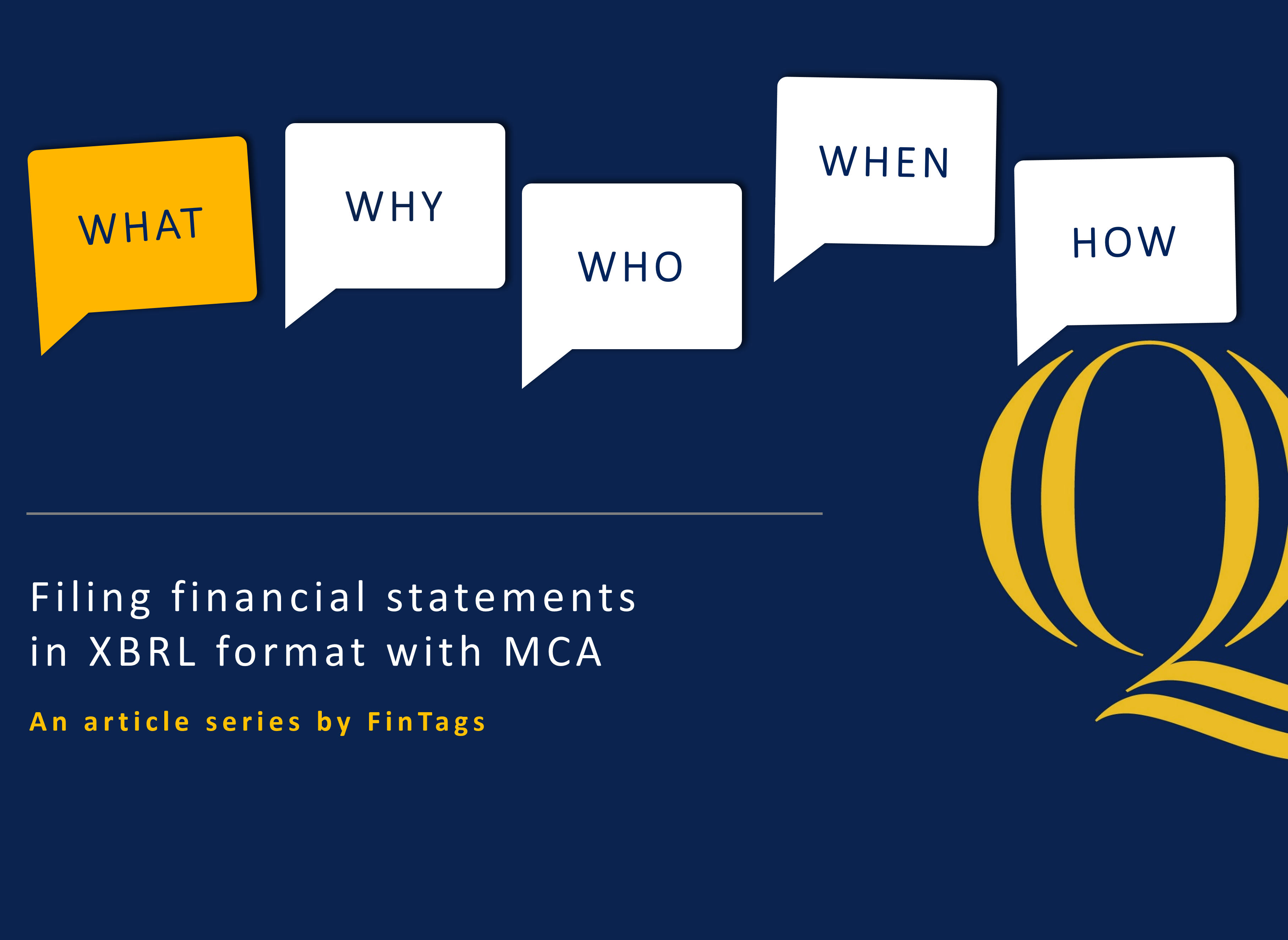XBRL Tagging Services for AOC4 filing with MCA.
What documents have to be compiled in the financial statements for XBRL conversion 
The following components of financial statements need to be filed in XBRL Format:
In India, the MCA Taxonomy is created based on disclosure requirements for financial statements from the
Company level extensions are not allowed while submitting XBRL data to MCA. Separate instance documents to be prepared for consolidated and standalone reports.
It is the process of assigning tags (referred as elements in taxonomy) from the taxonomy to the company specific reporting concepts. Along with XBRL tags, other information like reporting period, currency, scale etc. also needs to be specified for all the reported concepts which are to be included in the taxonomy. Tagging required appropriate selection of elements from the taxonomy based on its attributes, documentation and relationships with other elements.
Level of tagging refers to the extent of details required to be provided in XBRL instance document. There are two levels of tagging :
The scope of information that is at least to be captured in XBRL format in the instance document. The information prescribed as minimum tagging requirement in this filing manual, should be captured by entities, if it is applicable to them and prepared by them as part of annual report or annual returns as submitted to MCA
The tags as included in the MCA taxonomy, for which values have to be necessarily included in the instance document. If there is no corresponding value for the tag, then “0” should be entered.
The taxonomy has predefined mathematical rules between accounting concepts, which is stored in calculation linkbase. The values which are included in instance documents are checked for correctness based on the rules defined in calculation relationship. If the values for totals and sub-totals do not match as per calculation linkbase, the XBRL software will highlight the same as calculation inconsistency